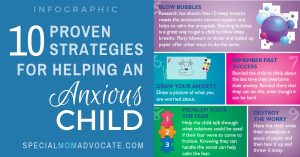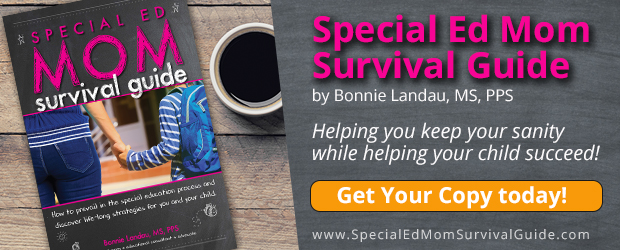 Anxiety is one of the most difficult emotions to get control over, but with useful strategies you can do a lot to help a child calm down. I have used the following strategies with children and found they are very effective at shifting thought patterns and helping a child find a more centered place.
Anxiety is one of the most difficult emotions to get control over, but with useful strategies you can do a lot to help a child calm down. I have used the following strategies with children and found they are very effective at shifting thought patterns and helping a child find a more centered place.
1. Quiet Hugs
Help your child feel safe by reassuring them that you are there and willing to help. Words can sometimes exacerbate anxiety, so sitting quietly with lots of hugs and empathizing can often work better.
2. Visualize Your Calm Place
Remember a time you were happy, calm and peaceful. See it in your mind with as much detail as possible. Always use the same calm place to enhance the effect.
3. 5×5 Grounding
Bringing attention back to the body helps to calm anxiety. Have the child see 5 things, hear 4 things, touch 3 things, smell 2 things and taste 1 thing.
4. 30 Jumping Jacks
Anxiety often causes shallow breathing, so having the child do an exercise that forces deep breaths can reset the anxious feelings.

5. Blow Bubbles
Research has shown that 10 deep breaths resets the autonomic nervous system and helps to calm the amygdala. Blowing bubbles is a great way to get a child to blow deep breaths. Party blowers or straw and balled up paper offer other ways to do the same.
6. Draw Your Anxiety
Draw a picture of what you are worried about.
7. Remember Past Success
Remind the child to think about the last time they had anxiety and overcame it. Remind them that they can do this, even though it is hard in the moment.
8. Problem Solve the Fear
Help the child talk through what solutions could be used if their fear were to come to fruition. Knowing they can handle the worst can help calm the fear.
9. Destroy the Worry
Have the child write their anxiety on a piece of paper and then tear it up and throw it away.
10. Pet a Furry Friend
Research has shown that petting an animal reduces the heart rate and calms the body. Sitting for 10 or 15 minutes petting a furry friend is a wonderful way to relieve anxiety and bring some smiles to a child.

ABOUT THE AUTHOR:
Bonnie Landau is a professional counseling and holistic therapist in Ventura County, California. Her specialities include therapy for autism, therapy for ADHD, and therapy for parenting who have kids with autism or ADHD or other neurodivergence. She changed careers from graphic design to counseling with the goal of helping struggling parents of kids with ADHD, autism, or other neurodivergence find strategies and solutions to help their children succeed. Bonnie is also the author of Special Ed Mom Survival Guide: How to Prevail in the Special Education Process and Find Life-long Strategies for You and Your Child.


